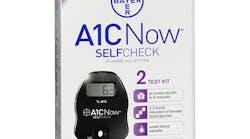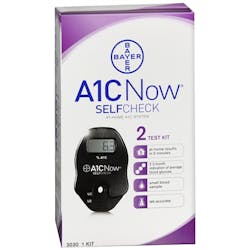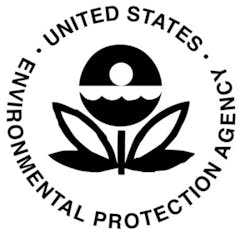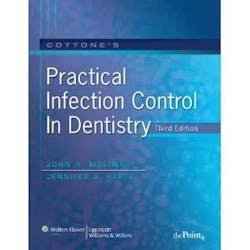Timothy Wright, DDS, MS, discussed CAMBRA in his session Emerging Science that Influences Practice. He highlighted that toothpastes, other topically applied fluorides, fluoridated water, and pit and-fissure sealants, along with dietary improvement, are still the foundation of caries management.(1,2) The use of these interventions is supported by good-quality evidence, and are used widely prevention and control of dental caries and decay. Other remineralizing agents may be used as adjunctive means for preventing, arresting or reversing the dental caries process, and subsequent tooth decay.
A recent American Dental Association Panel (ADA) panel concluded that some non-fluoride agents may offer various benefits as adjunctive therapies in children and adults at higher risk of developing tooth decay. These recommendations are presented as a resource for dentists and others to help direct the clinical decision-making process. As part of the evidence based approach to care, these clinical recommendations should be incorporated with the clinician’s professional judgment and the patient’s needs and preferences.(3)The panel was convened by the ADA Council on Scientific Affairs, in association with ADA Division of Science staff. They conducted a MEDLINE search to find all randomized and nonrandomized clinical studies regarding the use of nonfluoride caries-preventive agents. The panel evaluated evidence from 50 randomized controlled trials and 15 nonrandomized studies to assess the efficacy of various nonfluoride caries-preventive agents. They defined “levels of certainty” as high, moderate and low.(4) The paper discusses: sucrose-free polyol chewing gums; xylitol candy, lozenges and syrup; and topical chlorhexidine products.
1. Walsh T, Worthington HV, Glenny AM, Appelbe P, Marinho VC,Shi X. Fluoride toothpastes of different concentrations for preventing dental caries in children and adolescents. Cochrane Database Syst Rev 2010;(1):CD007868).2. Griffin SO, Oong E, Kohn W, et al. The effectiveness of sealants in managing caries lesions. J Dent Res 2008;87(2):169-174.3. Rethman MP, Beltrán-Aguilar ED, Billings RJ, Burne RA, Clark M, Donly KJ, Hujoel P, Katz BP, Milgrom P, Sohn W, Stamm JW, Watson G, Wolff M, Wright JT, Zero D, Aravamudhan K, Frantsve-Hawley J, and Meyer DM. Nonfluoride caries-preventive agents: Executive summary of evidence-based clinical recommendations. JADA 2011;142;1065-1071. The full report can be accessed at ebd.ada.org/ClinicalRecommendations.aspx).4. ebd.ada.org/contentdocs/FINAL_2011_Revised__ADA_. 5. Fluoride: Dose-Response Analysis For Non-cancer Effects and Fluoride: Exposure and Relative Source Contribution Analysis. water.epa.gov/action/advisories/drinking/fluoride_index.cfm.6. Fluoride Risk Assessment and Relative Source Contribution:water.epa.gov/drink/contaminants/basicinformation/fluoride.cfm. Additional resources
1. Fact sheet (PDF) (2 pp, 29K) EPA has completed and peer-reviewed a quantitative dose-response assessment based on the available data for severe dental fluorosis as recommended by National Research Council (NRC). Additional research will be necessary to obtain dose-response data amenable to a quantitative risk assessment for Stage II skeletal fluorosis and/or skeletal fractures. The dose-response assessment provides a reference dose based on the critical health effect of pitting of the enamel in severe dental fluorosis.2. Fluoride: Dose-Response Analysis For Non-cancer Effects (PDF) (160 pp, 1.5MB; 820-R-10-019). 3. Fluoride-Related Skeletal Effects: Evaluations of Key Studies (PDF) (72 pp, 2MB; 820-R-10-017).4. Dental Fluorosis: Evaluations of Key Studies (PDF) (283 pp, 8.3MB; 820-R-10-018).5. Comment-response Summary Report for the Peer Review of the Fluoride: Dose-Response Analysis for Non-Cancer Effects Document (PDF) (107 pp, 713K; 820-R-10-016).6. EPA has also completed and peer-reviewed a document on environmental exposure of children and adults to fluoride and the relative source contribution (RSC) for water. The RSC is needed in order to derive the Maximum Contaminate Level Goal (MCLG) from the dose-response assessment. 7. Fluoride: Exposure and Relative Source Contribution Analysis (PDF) (210 pp, 15MB; 820-R-10-015).8. Comment-Response Summary Report for the Peer Review of the Fluoride: Exposure and relative Source Contribution Analysis Document (PDF) (113 pp, 807K; 820-R-10-014).9. Basic information about the existing regulations for fluoride can be found at: water.epa.gov/drink/contaminants/basicinformation/fluoride.cfm.10. Information about "Six-Year Reviews" of National Primary Drinking Water Regulations. water.epa.gov/lawsregs/rulesregs/regulatingcontaminants/sixyearreview/.11. Information about food tolerances for sulfuryl fluoride program can be found at: www.epa.gov/oppsrrd1/registration_review/sulfuryl-fluoride/index.html.12. Information on CDC's community water fluoridation program can be found at: www.cdc.gov/fluoridation/index.htm.
Maria Perno Goldie, RDH, MS
To read previous articles in RDH eVillage FOCUS from 2011 written by Maria Perno Goldie, go to articles.










